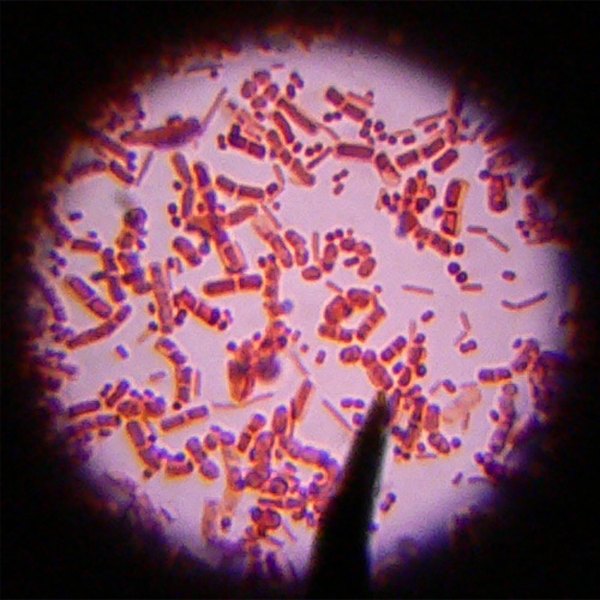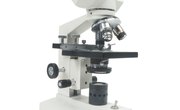
Most professional microscopes contain multiple objective lenses on a rotating nosepiece to facilitate a quick change in the magnification of a slide specimen. Parfocal lenses are those that are oriented in such a way that the specimen remains in focus as the objectives are rotated into place.
Microscope Components Involved in Magnification

Microscopes tend to have two types of lenses: Ocular and Objective. The ocular lens is the one in the eyepiece that the user looks through, and the objective lenses are those that are located on the rotating nosepiece. Images are focused by using the focus knobs. A typical lens set involves a 10x ocular lens, or one that magnifies the image ten times, and objective lenses that range from 4x to 100x, for a total magnification range of 40x to 1000x.
Basic Microscope Use

A specimen is prepared on a slide and placed on the stage, the horizontal platform directly under the objective lenses. Light is projected up through the stage and into the objective to illuminate the specimen. The coarse and fine focus knobs are then used to bring the image into its sharpest possible view.
Parfocality
When a specimen is viewed through a microscope it is easiest to begin viewing the slide under a lower magnification to get a broad view. This helps the operator determine where to center the slide in order to select a higher magnification. For this reason, it is ideal for the objectives to be oriented in such a way that the slide remains in focus when switching to a higher or lower magnification level.
Definition
"Parfocal" is a term that literally means "side-by-side focus." All of the objective lenses in a parfocal microscope have focal points that are all in the same plane. Parfocality is not limited to microscopes; it can also refer to lenses used in telescopes or photography.
Determining Parfocality
To determine if a microscope has parfocal objectives, a slide should be brought into focus using the highest magnification settings. The operator should then switch to an objective with a lower magnification level to check for sharpness of focus on the slide. If the slide remains in focus with very little adjustment, the objectives are parfocal; conversely, if the slide is not focused, the objectives are not parfocal. It is important to start with the most powerful objective because it has the narrowest range of focus.
References
About the Author
Ryan Schorr is a senior communications student at Kennesaw State University completing a journalism degree in Spring 2010. He has written in Atlanta for 10 years and has submitted articles to such publications as the "Atlanta Journal-Constitution," CNN, and Creative Loafing.
Photo Credits
Image by Flickr.com, courtesy of Matthew Hine
